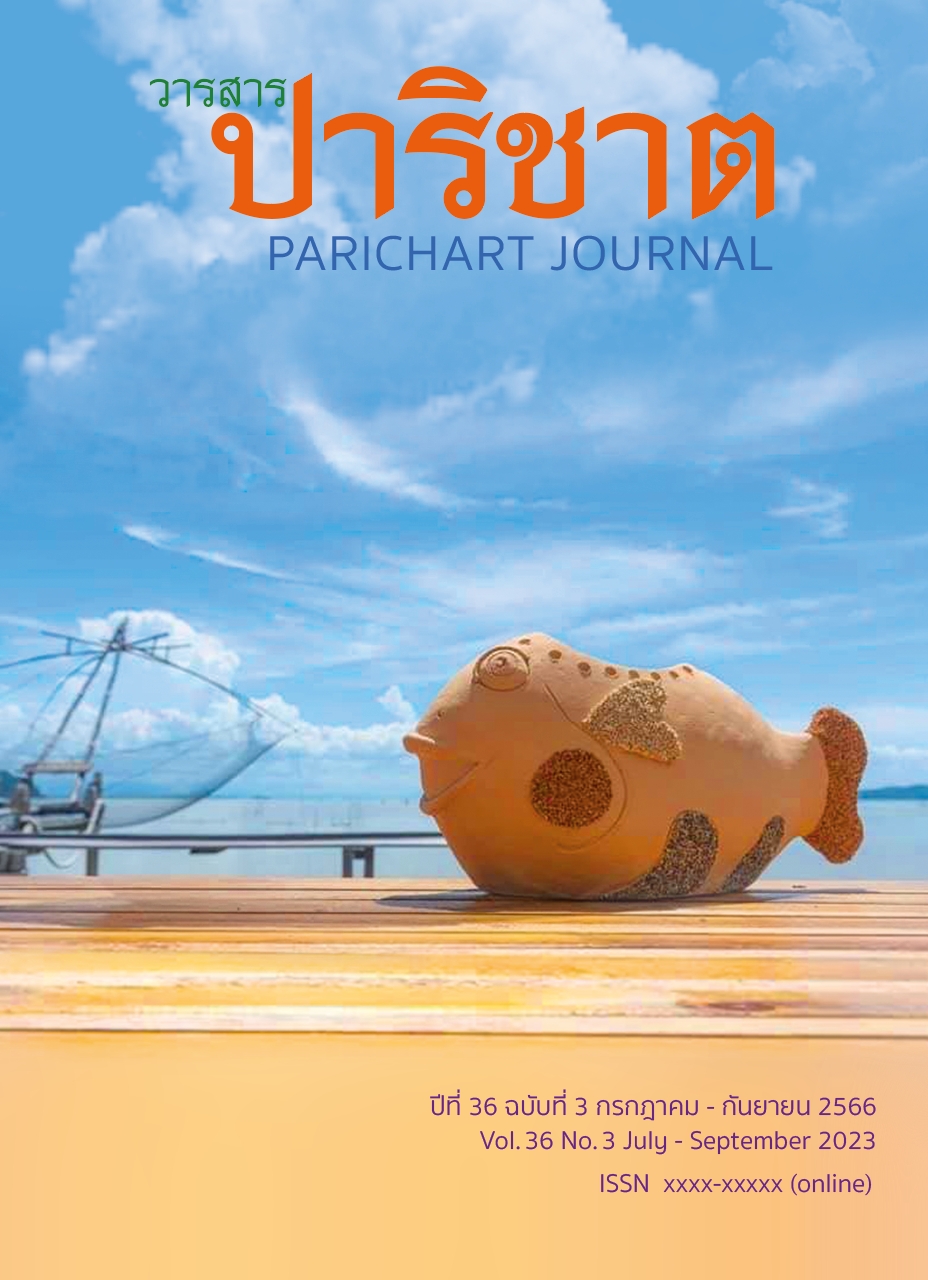The Development Program for Thai Musical Terms for Pi Phat Ensemble
Main Article Content
Abstract
This qualitative research and experimental research aimed at 1) systematically collecting the knowledge of Thai Musical vocabulary for Pi Phat ensemble by using technology, 2) developing and innovating a new multi-media for learning Thai Musical vocabulary for Pi Phat ensemble with the use of information technology, and 3) transferring the knowledge of Thai Musical vocabulary for Pi Phat ensemble through online applications. With the use of various tools including questionnaires, interviews and usability tests verifying from the developed tools called “Innovative Media for Thai Musical Terms and Vocabulary”, the results were as
followed. 1) The collective knowledge and information includeed 15 important instruments: “Pi Nai”, “Pi Nok”, “Pi chawa”, “Pi Mon”, “Ranad Ek”, “Ranad Thum”, “Gong Wong Yai”, “Gong Wong Lek”, “Taphon, “Klong Tad”, “Klong Taphon”, “Klong song na”, “Taphon Mon”, “Poengmangkok”, and “Klong Khaek” as well as 418 technical vocabularies derived. Such data were saved into the Cloud. 2) The development of instructive media application with the creation of 386 video clips, stored directly on the cloud able to be accessed through applications. 3) The transfer of knowledge could be evaluated in terms of satisfaction into the following sections: (1) for the technical experts, the mean was at 4.00 with the standard deviation at 0.21 which were considered to be at a high level, (2) the overall satisfaction mean from the content experts was at 4.08 with the standard deviation of 0.25 which were also deemed to be at a high level. (3) For the overall satisfaction from the users, the mean was at 4.39 with the standard deviation of 0.08 which were also at a high level.
Article Details

This work is licensed under a Creative Commons Attribution-NonCommercial-NoDerivatives 4.0 International License.
References
Khamfoi, P. (2011). Development of a recording system for Thai traditional music to international standards. Parichart Journal, 24(2), 108-122.
Inthasunanon, K. (2009). A study of the wisdom of vioce seapa and vioce Thai for raising awareness of preserving and appreciating cultural heritage. Srinakharinwirot University.
Khomfoi, P. (2016). Designing and creating Thai musical notation characters for Microsoft Operations Office. "The 26th National Academic Conference of Thaksin University in 2016 focused on the theme 'Integrating Research into the Society" (pp. 443-449). Bookshelf Thaksin University. Ebook.tsu.ac.th/?shelfid=MTE=.
Phanpong, P. (2014). A solo analysis of ground noi sum chon by Ajarn Siwasit Nilsuwan. Bachelor's Degree Program in Liberal Arts. Faculty of Humanities Kasetsart University.
Boonplien, P. (2019). Guidelines for solo Khong Wong Yai, Plaeng Pae, Sam chon. Academic Journal of Phetchaburi Rajabhat University, 9(1), 271-279.
Pintukanok, C. (2013). Copfinder: An application for searching police stations and emergency numbers. Bangkok: Master' s Thesis, Science Program Faculty of Information Technology, Dhurakij Pundit University. Digital Research Information Center. https://dric.nrct.go.th/index.php?/Search/SearchDetail/269637.
Ruenglan, K. (2020). The development of khim's etudes for performing of deow Lao Pan. Master of Arts thesis, (Music Education) Graduate School Mahidol University, Mahidol University Library and Knowledge Center. https://repository.li.mahidol.ac.th/entities/publication/6c2aceb3-4d0d-4f39-bad1-eec597a8ed8d.
Utchariyaprasit, K. (2018). A study of transmission processes of jakhay performance by Ratee Wisetsurakarn. Online Journal of Education OJED, 13(2), 68-79.
Chaiphakdi, C. (2019). The process of conveying the xylophone performance of Kru Paitoon Channat. Journal of the Humanities and Social Sciences. Ubon Ratchathani Rajabhat University, 10(2), 16-28.


